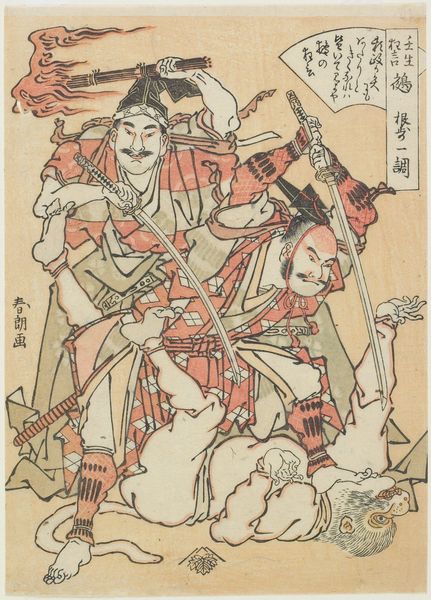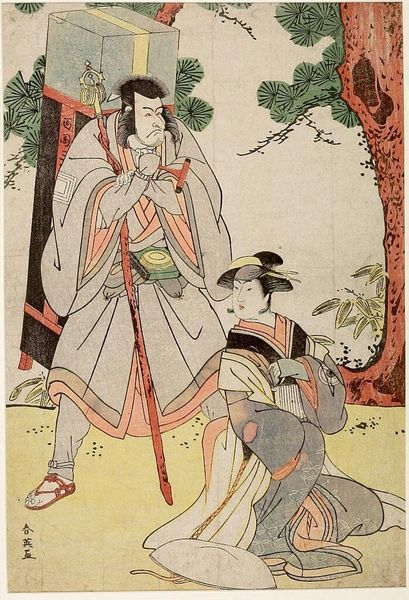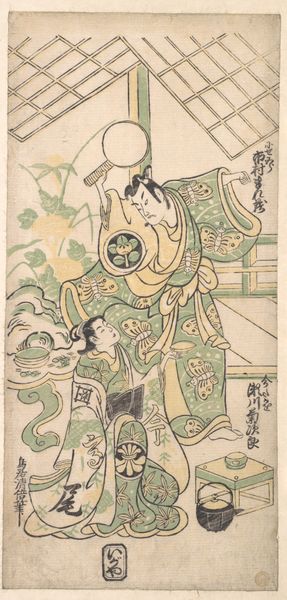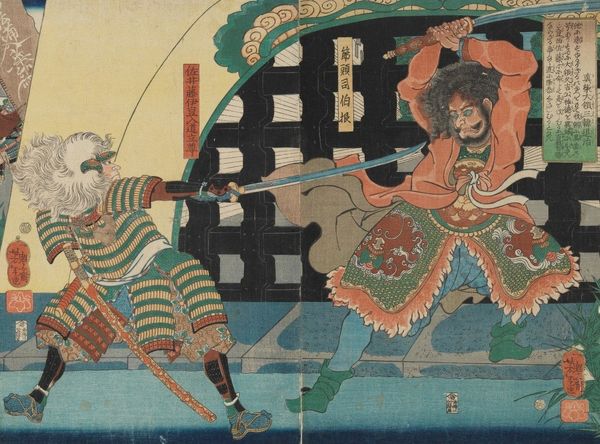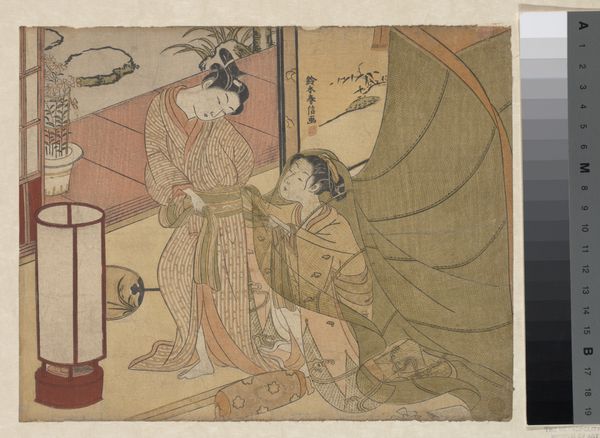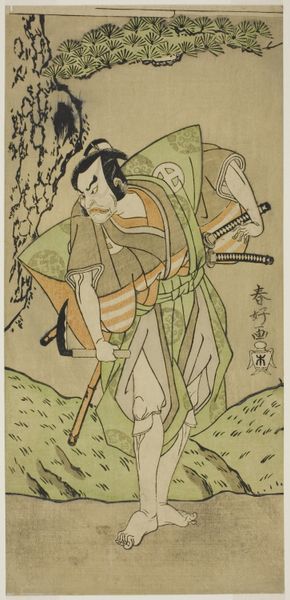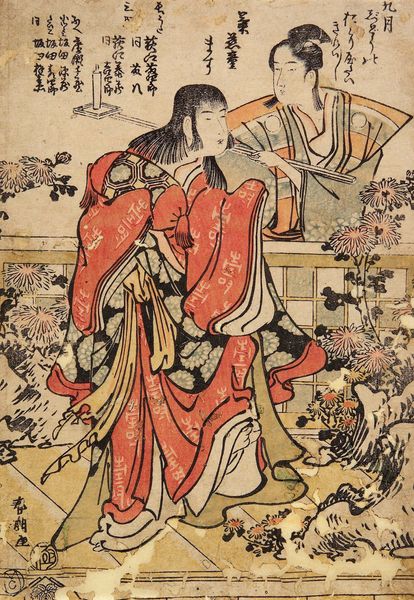
Right-Hand Page: The Actors Bando Hikosaburo III as Soga no Goro (right), and Segawa Kikunojo IV as Onna Asahina (left), in the Play Ume-goyomi Akebono Soga; Left-hand Sheet: The Actors Onoe Matsusuke I as Furugori Shinzaemon (left), and Ichikawa Danjuro V and Kagekiyo (right) in the Play Hatsumombi Kuruwa Soga, Performed at the Nakamura Theater in the First Month, 1780 c. 1780
0:00
0:00
print, woodblock-print
# print
#
asian-art
#
ukiyo-e
#
figuration
#
woodblock-print
Dimensions: 15 × 32.3 cm (5 7/8 × 12 11/16 in.)
Copyright: Public Domain
Curator: What immediately strikes me is the almost ghostly, spectral quality. Are they present? Are they memories? Editor: Indeed, this divided woodblock print by Katsukawa Shunko, from around 1780, presents actors in scenes from two different plays, both performed at the Nakamura Theater. Note the materiality: the paper, the inks, the craft of block cutting. Each choice speaks volumes. Curator: The paper lends such warmth. A comforting stage for passionate stories, or maybe even personal longing? You sense it in the figures. There's such tenderness in the rendering of each pose, that weight in their bodies. Editor: Consider the collaborative labor behind this print, the papermakers, ink producers, block carvers, and the artist themselves. Shunko’s print represents a specific type of “commodity aesthetics”, a visual rendering that celebrated these popular theatrical performances as desirable objects. Curator: I do love how their emotions are distilled, simplified in their posture. The figure leaning down seems burdened, resigned to grief, while another looms powerfully. You almost feel the energy crackling between them. The woodblocks are deceptively simple in style but incredibly effective. Editor: We are, after all, witnessing performers playing roles—interpreting other characterisations. What you call emotion I see more as highly studied affectations and codified expressions meant to signal the figures' social position, state of mind, and significance in the drama. Note the patterns in their kimonos, alluding to this theatrical economy. Curator: Do you think that rigid code diminishes the individual experience? For me, knowing they’re bound to that system makes the slivers of pure feeling that burst through all the more precious and real. Editor: It's not a question of diminished experience. For its original viewers, prints such as these reinforced a cycle of material production and consumption, providing not just an image of actors, but access to a lifestyle represented in the theater. Think about this relationship as an integral and equally captivating aesthetic consideration. Curator: A print made by hands to move us? That feels almost radical to celebrate the theater itself, especially in the face of grief or change or simply trying to hold the attention. The magic continues, then! Editor: Precisely. These prints offer an incredible insight into not only artistic, but also cultural, contexts. That is their value, after all.
Comments
No comments
Be the first to comment and join the conversation on the ultimate creative platform.


